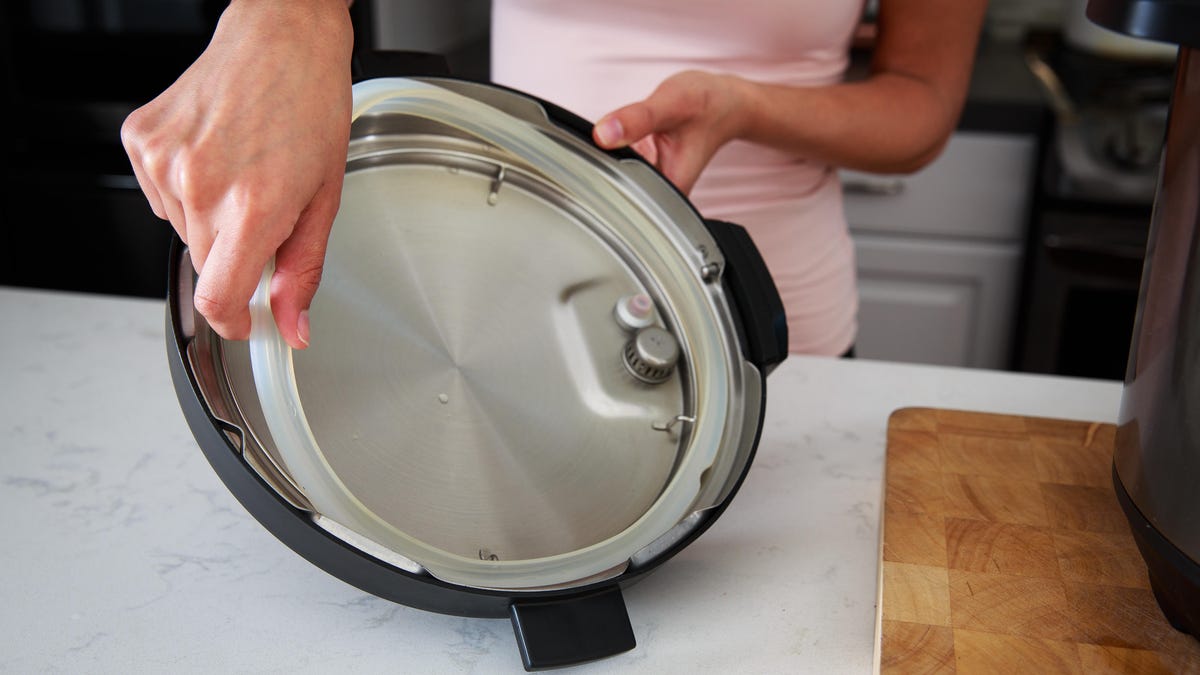Safety tips every Instant Pot owner should know
You don't want to get burned or have your cooker explode, so read this.

Growing up, my mom used a pressure cooker constantly. I remember my dad yelling at me -- almost on a daily basis -- to "stay away from the steam" and not "take the lid off."
Now, my mom's manual pressure cooker is quite a bit different from an Instant Pot, but don't let that fool you. There are still plenty of safety precautions you need to take when using the pressure cooking program. Follow these safety tips and you'll make my dear old dad proud.
Read more: The complete guide to your Instant Pot
Fill your cooker the right way
What you put in an Instant Pot matters. Too much food or liquid in your Instant Pot while pressure cooking can lead to dangerous pressure levels.
As a rule of thumb, don't let the total amount of precooked food and liquid in the inner pot go over the two-thirds line. If you are pressure cooking food that expands like rice, beans, pasta or dried vegetables, be even more cautious. Only fill the inner pot to half full. Also, always add at least 2 cups (480 ml) of water or other liquids when pressure cooking or the unit won't pressurize properly.
Cranberries, applesauce, cereals like pearl barley, split peas, noodles and rhubarb can sputter or foam. This can cause the steam release valve to clog, creating too much pressure. Instant Pot recommends only using these ingredients when an Instant Pot recipe states it's OK.
Be careful with the lid
Locking the lid properly is important before any pressure cooking. A lid that's off kilter or unlocked can explode off and cause burns. Trust me, I've seen a pressure cooker explode. It is literally a hot mess.
Always double-check that the sealing ring is properly in position under the lid, clean and free of debris before cooking. Otherwise, your lid may not seal.
Finally, twist the lid clockwise and align the arrow with the locked icon to get the pot to lock properly. Your display should flash "Lid" if it isn't placed correctly.
Remember, programs start cooking 10 seconds after you press the button. So, be sure you have your lid sealed and the steam release handle where it needs to be before you press Saute, Slow Cook, Pressure Cook, Yogurt or any of the other program buttons.
Let the Instant Pot do its job
In the olden days of manual pressure cookers, my mom had to time the pressure build and when to take off the lid. Things are a bit easier with an Instant Pot because it can time everything for you, so let it do its job.
The pressure cooker can take from a few minutes at the very least to 40 or more to get to where it needs to be. Do not open the cooker until it has depressurized completely to avoid explosions, even if you just want a quick peek.
Pro tip: If the float valve is still up or the lid is difficult to turn, the cooker is most likely still pressurized. Give it time and follow the recipe instructions for releasing pressure.
Stay away from the steam
This is a tip that stayed true for my mom's old pressure cooker through to the modern digital versions. Don't put any exposed body part over the steam valve unless you want a nasty burn. Be sure to keep your Instant Pot out of the reach of children, too.

